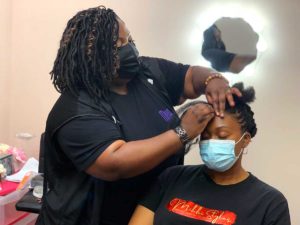
Article written by Rebecca Wright, Ivan Watson and Isaac Yee, CNN
For the past decade, Mikayla Lowe Davis has been braiding and styling hair for her customers.
“The first thing people see a lot of times is our hair,” she says. “We have to represent our crown and be confident with wearing it.”
The 29-year-old stylist, who owns Mikki Styles Salon, is braiding in synthetic hair to the head of a customer in Arlington, Texas, a process which takes several hours and costs upwards of $115.“It helps them to become more empowered,” Lowe Davis says of her customers. “It gives them confidence when they can see how beautiful they are, how beautiful their hair is.”
Lowe Davis has a degree in biology, but the creative side of the hair industry drew her in. She sources products at beauty supply stores — a fixture of many African American communities.
“Black women spend so much money on hair care products,” says Frankesha Watkins, an MBA-educated entrepreneur who owns the BPolished Beauty Supply store in Arlington. “I learned that from this pandemic, no matter what’s going on, people want their hair to be nice.”In fact, the business of hair extensions is booming, according to Tiffany Gill, associate professor of history at Rutgers University and author of the book “Beauty Shop Politics.” The Black hair care market in the United States was estimated to be worth more than $2.5 billion in 2018 by research company Mintel, and globally, the commodity of human hair is known as “black gold” — due to the continued rise in its value. The majority of hair products come from Asia, mostly China.
Now, some of the Chinese factories supplying thousands of kilograms of hair to the American market are under scrutiny by the United States government, which is alleging the use of forced labor in the country’s far western region of Xinjiang — where rights groups say up to 2 million Uyghurs and other ethnic minorities have been detained in internment camps since 2016. Beijing has called the camps “vocational training centers” and says the expansion of factory jobs campaigners have linked to the camps is part of a “poverty alleviation” program.
Hair products are being exported from Xinjiang around the world
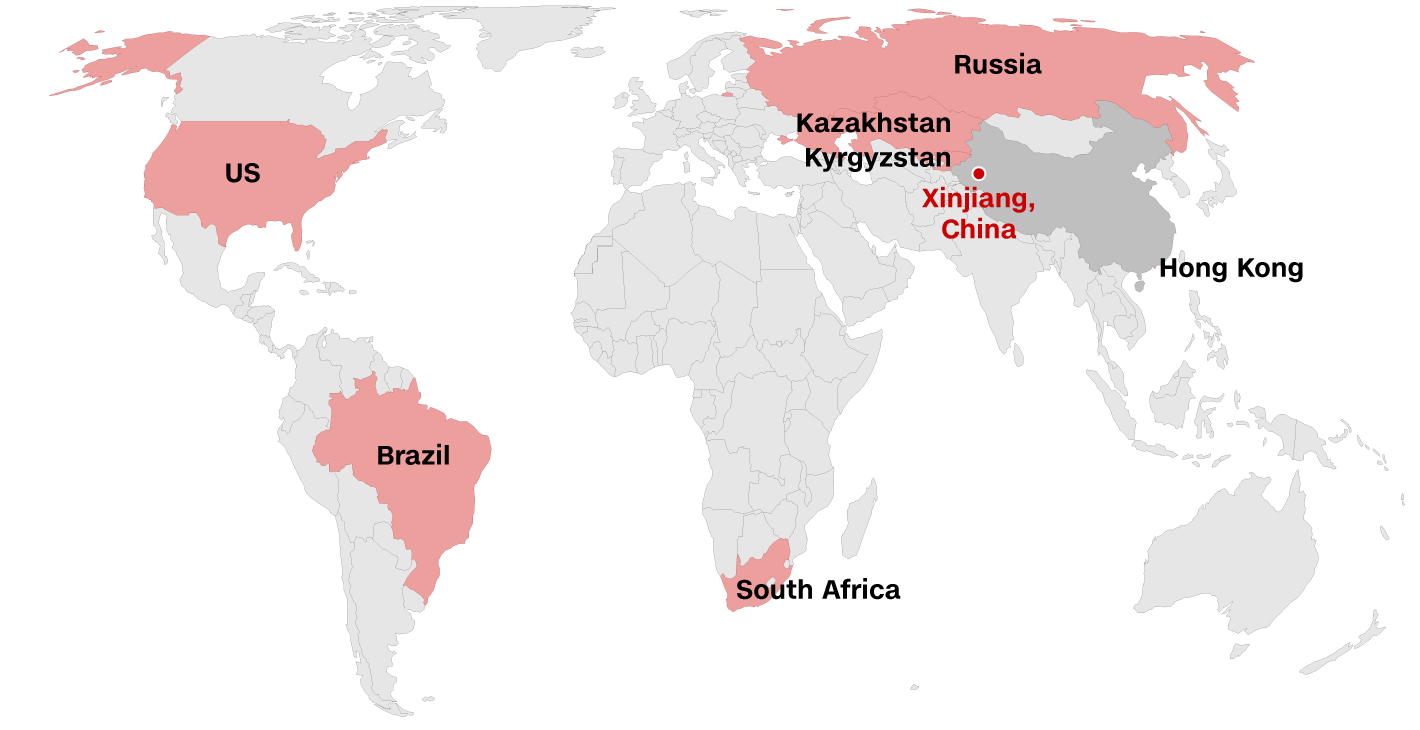 In September, US Customs and Border Protection announced a Withhold Release Order (WRO) on any incoming shipments of hair from the Lop County Hair Product Industrial Park in southern Xinjiang. That followed two earlier WROs on companies registered within the same area, including the June seizure of 13 tons of human hair worth $800,000 from Lop County Meixin Hair Products — which is now subject to a criminal investigation by the US Immigration and Customs Enforcement (ICE) — and a previous order in May blocking imports from Hetian Haolin Hair Accessories.
In September, US Customs and Border Protection announced a Withhold Release Order (WRO) on any incoming shipments of hair from the Lop County Hair Product Industrial Park in southern Xinjiang. That followed two earlier WROs on companies registered within the same area, including the June seizure of 13 tons of human hair worth $800,000 from Lop County Meixin Hair Products — which is now subject to a criminal investigation by the US Immigration and Customs Enforcement (ICE) — and a previous order in May blocking imports from Hetian Haolin Hair Accessories.
The two companies did not respond to CNN’s request for comment, but the Information Office of the Xinjiang Uyghur Autonomous Region faxed a response to CNN regarding the earlier WROs, expressing “severe condemnation” about the “barbaric act” against “private enterprises” that “provide opportunities for local ethnic minority people to achieve employment and help people get rid of poverty.”
Video footage shows boxes piled high with hair products seized in Newark, New Jersey. Credit: US Customs and Border Protection
Until earlier this year, Hetian Haolin had been a major supplier of synthetic hair products to a Texas-based company called I&I Hair. Its main product, EZBraid, is the top-selling hair braid at BPolished.
“When I found out about the forced labor, honestly I was shocked,” Watkins says. “I don’t want to participate or support anything that goes against what I personally believe in.”
I&I Hair stopped shipping from Hetian Haolin in early 2020, when the company learned about the allegations of forced labor.
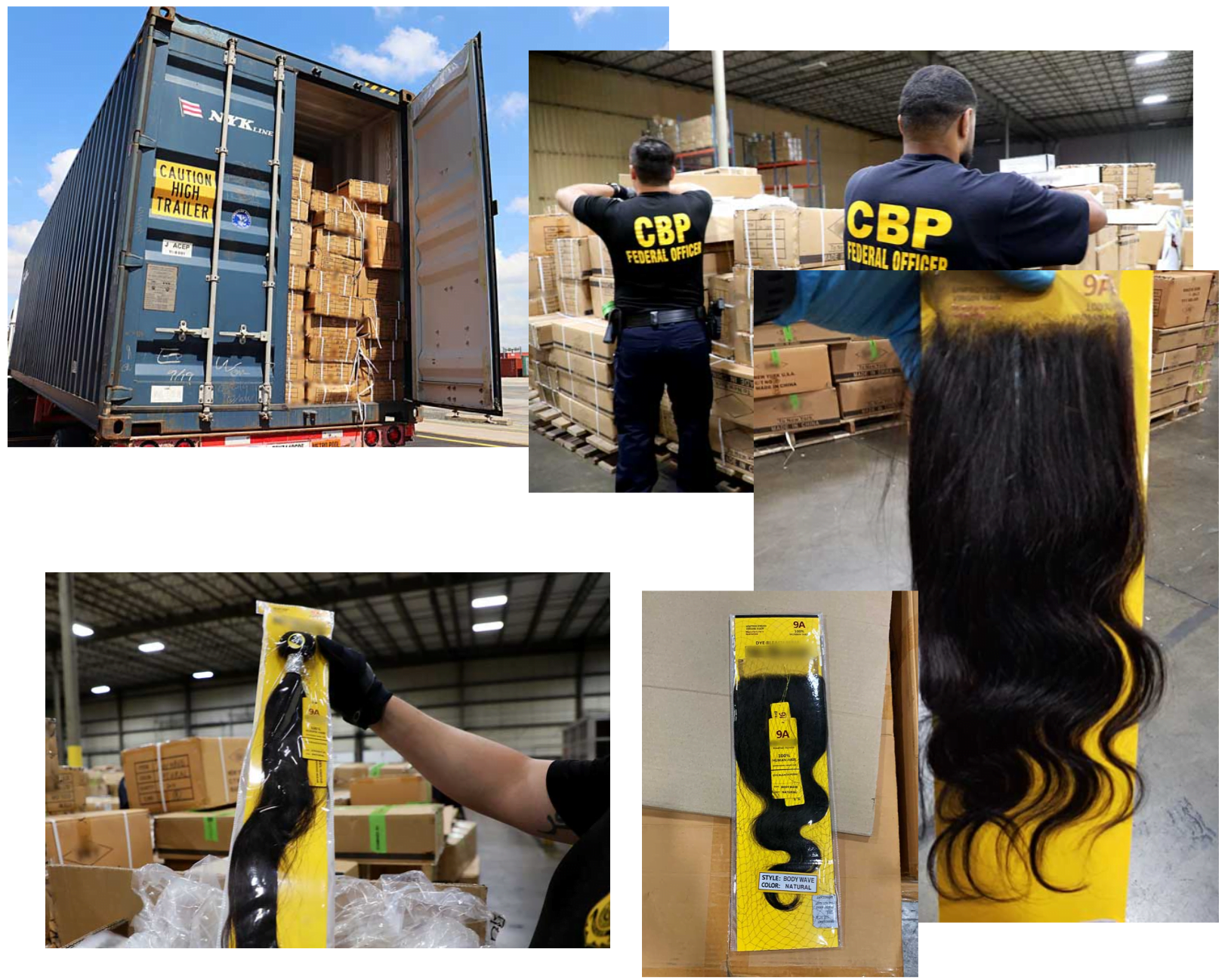
“I don’t think a lot of us even spent time looking into these issues of internment camps,” William Choe, digital marketing manager for I&I Hair told CNN. “We were oblivious to it, (so) I believe that a lot of other people in the industry are as well.”
I&I cancelled all orders from the factory, and later cut ties with their agency, KCA Global in South Korea, which I&I said managed their supply chain.
“I do think that they’ve done their due diligence to make things right,” Watkins says, referring to I&I.
OS Hair, another hair company based in Duluth, Georgia, which makes a product called Spetra Braid, was also receiving large shipments of hair products from Hetian Haolin until April this year.
OS Hair has also now changed its supplier, and said a South Korean company, Selim Fiber, arranged the deal with the Xinjiang factories. A company executive from Selim Fiber, who did not want to be named, said it knew nothing about forced labor allegations, and only shipped the raw materials to the factory under a contract with KCA Global — the same agency that had worked with I&I Hair.
“We were initially shocked to find out about forced child labor and prison internment camps regarding our products.”
OS Hair, also known as
Optimum Solution Group
Han Hyun-jung, CEO of KCA Global, told CNN it was shocking to hear of the forced labor allegations at Hetian Haolin. He said the company regrets what happened and no longer works with the manufacturer. Han said KCA Global had signed a contract with a factory in Xuchang, eastern China, which later moved some production to Xinjiang without them realizing. He added that the manufacturer also told KCA Global that “they were acting properly according to the poverty alleviation project.”
Both I&I Hair and OS Hair denied news reports published in July saying their orders were part of the 13-ton seizure, saying they never ordered from Lop County Meixin Hair Products, and had already canceled their orders from Xinjiang months earlier.
Shipping records obtained by CNN show that two other US-based companies, Sky Trading in New Jersey, and Global Morado in Los Angeles, received shipments this year from Lop County Meixin. Neither company responded to CNN’s request for comment.
As companies attempt to clean up their supply chains, stylist Mikayla Lowe Davis says she hopes the seizures will create a wake-up call for the industry, and push manufacturers to be more transparent about the origin of hair products entering the US.
“A lot of times it’s not made clear on the packaging on where exactly it came from,” she says. “I definitely don’t want it to come from slave labor.”
Associate Professor Tiffany Gill says she finds it particularly sad that the accusations of forced labor are associated with products used primarily by the African American community given “the long, painful history and legacy of forced labor that was a part of American chattel slavery.”
Author Tiffany Gill calls it “particularly sad” that hair products made with alleged forced labor are being bought by African Americans, given the legacy of slavery in the US. Credit: via Skype
But the blame has to lie with the manufacturers, she says.
“We have to be careful not to put the entire onus for ending these exploitative practices on consumers,” she added. “So much of it is shrouded in secrecy, that we don’t know the means of production, that we don’t know who is producing what we wear on our hair.”
Putting the burden of responsibility onto manufacturers and importers to prove the absence of forced labor in their supply chains is the goal of a new US bill — the ‘Uyghur Forced Labor Prevention Act’ — which passed with rare bipartisan support in the House of Representatives on September 22, by a margin of 406-3. Wang Wenbin, a Chinese Foreign Ministry spokesperson, said “China is strongly indignant and opposed” to the bill which “maliciously smears the human rights situation in Xinjiang.”
‘Everyone’s hair was cut short’
The US accusations of forced labor in Xinjiang are part of a wider pattern of alleged human rights violations by the Chinese government in the region.
Despite being the largest of China’s regions and provinces, Xinjiang has a comparatively small population of just 22 million. It is home to a variety of minority groups, of which the predominantly Muslim, Turkic-speaking Uyghurs are the largest. Uyghurs, alongside other Turkic groups including Kazakh and Kyrgyz people, are culturally and linguistically distinct from Han Chinese, the country’s dominant ethnic group.
After a series of deadly attacks in recent years, authorities have taken an increasingly tough approach in combating what they claim is a violent separatist movement among minority groups in Xinjiang.
This view has been used to justify strict curbs on religious freedoms alongside sweeping surveillance measures, including the installation of security checkpoints across the region.
The US says this policy has culminated in the creation of a network of shadowy mass internment camps, intended to subdue and assimilate Xinjiang’s Muslim minorities through coercive political indoctrination, claims China vehemently denies.
The US State Department estimates that as many as 2 million people could have passed through the camps system since 2017.
CNN has documented multiple testimonies of people who escaped from the camps, including women who say they were tortured, sexually assaulted, and forced to undergo sterilization procedures – all accusations which China has denied.
Leaked Chinese documents seen by CNN show that people can be sent to a camp for perceived infractions which range from wearing a headscarf or a long beard, holding a passport, or having too many children.Former Xinjiang resident Yerzhan Kurman had moved to Kazakhstan with his family in 2015. He returned to visit his mother in 2018, but was then swiftly taken into a “political educational school.”
“They came in the middle of the night and took me to the camp,” says the 42-year-old. “They handcuffed us, put a bag over our head.”
Kurman, who is ethnically Kazakh, says he was placed in a cell with nine other men, with whom he shared a bucket as a toilet. They were monitored continuously by cameras, weren’t allowed to talk to each other, and had to ask permission to use the bucket. If they disobeyed, they were punished by being made to stand upright all night, or denied food, he says.
They also got in trouble if they refused to sing the Chinese national anthem up to seven times a day, he says. If they failed Chinese language tests, their detention could be extended.

Another former Xinjiang resident, Gulzira Auelkhan, says she was also thrown in a camp when she returned to the region from Kazakhstan to visit her family in 2017.
“Cameras monitored us everywhere,” says Auelkhan, who is also ethnically Kazakh. “If we cried they would handcuff us, if we moved they would also handcuff us.”
“They would allow us to go to the toilet for two minutes only.” Auelkhan says. “If anyone exceeded that time, they would hit us with electric sticks.”
Auelkhan says the authorities told her she “came from a terrorist country,” and then they “cut my hair. Took my blood samples.”
Several other women have previously told CNN they had their hair forcibly removed during internment.
“They cut our hair off, made us bald,” says Gulbakhar Jalilova, an ethnic Uyghur from Kazakhstan now living in Istanbul after escaping the camp system. “Everything was gone. Nothing. I had long hair.”
Zumrat Dawut, an ethnic Uyghur who is now living in Washington, DC, after fleeing Xinjiang, says she endured a similar experience.
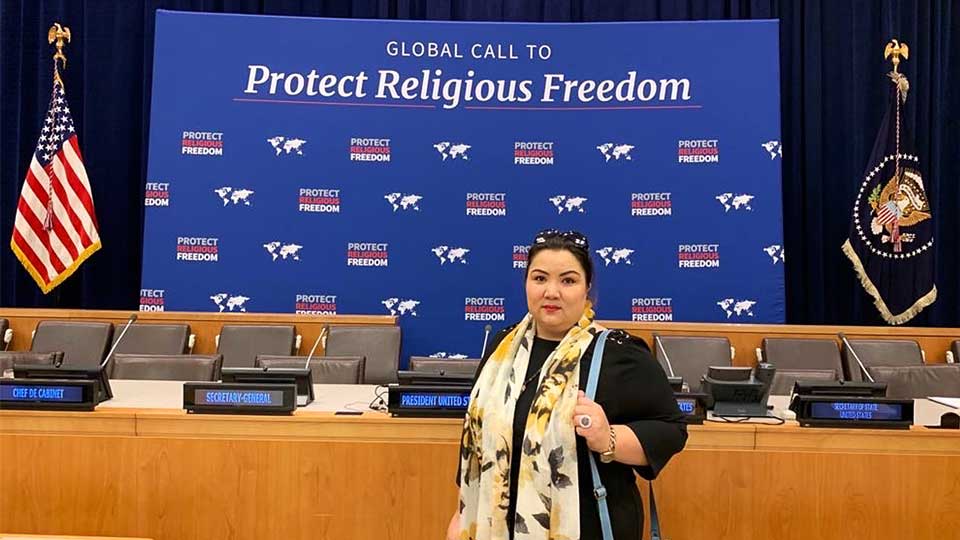
“I had long hair, all the way to my hips,” Dawut says. “On the second day, they took me to a separate office, where they had a tray with a machine and scissors, and they cut my hair.”
Zumrat says “everyone’s hair was cut short,” which made the female inmates “sad and stressed.” She doesn’t know what happened to the hair, but says her “heart aches” if she sees hair products from China in American stores.
‘I look at them and wonder if it is my hair or the hair of my sisters. I am wondering when people wear it, do they ever think about where it is coming from’
Zumret Dawut
The systematic nature of the hair removal has also been confirmed by Qelbinur Sidik, an ethnic Uzbek who is married to a Uyghur. Sidik used to live in Xinjiang and is now exiled in the Netherlands. She told CNN that she was forced to teach Chinese in one of the internment camps in 2017, and that everyone entering the camp had their hair shorn off. She was told her role was to teach “illiterates” and that the assignment at the camp was “highly secret.”
“After about 10 days, all of them were completely shaven, hair and beards,” Sidik says. “Women also were shaven.”
During a months-long investigation, CNN was unable to verify what happened to the hair allegedly taken from the women in the camps. Industry experts tell CNN that the high value of human hair means it is unlikely to be discarded, but point out that it would only make up a small part of the hair that would be needed for a stable supply chain. China also imports hair from India, Malaysia and several other countries.

CNN was able to purchase several hair samples advertised as “Xinjiang human hair,” along with hair labeled as Chinese and Russian, from a Chinese company called Emeda Hair — which has not responded to request for comment. DNA testing of hair samples is not possible without the root, and drug testing on the hair samples purchased proved inconclusive.
The Xinjiang authorities did not respond to request for comment on the accusations that hair is removed from detainees, or the allegations that the hair is being sold. But in September, China’s state-run tabloid newspaper The Global Times published a report quoting a hair product company manager as saying the “sensational accusation” that hair forcibly taken from ethnic minority women was being used in their supply chain was a lie that was “crazy and ignorant of the industry.”
‘Black Gold’
When US Customs seized hair products worth an estimated $800,000 this summer, it highlighted that human hair is a valuable commodity that is traded across international borders.“People in the industry do call it ‘black gold,’ and the reason why is because the value in the last 10 years has increased almost 12 fold,” says Krishan Jhalani, CEO of US-based Indique Hair, which sells premium Remy human hair donated to temples in India. “The demand has gone through the roof.”
China is the biggest manufacturer of human hair wigs and extensions in the world, and the main supplier of hair products to the US, with nearly $1 billion of exports entering the US in 2019, US Customs and Border Protection says. The scale of production, price point and online accessibility have all helped China to dominate the market.
“The US absolutely is one of the growth drivers in the industry,” Jhalani added.
And despite pressure from the US government regarding the use of alleged forced labor, the US is still Xinjiang’s fastest growing overall export market, with exports increasing 250% to $26.6 million from April 2019 to April 2020, a study from the Center for Strategic and International Studies (CSIS) shows. After chemical and mineral products, hair is the biggest export product from Xinjiang to the US in terms of order volume.
Data from US shipping data company Import Genius shows that shipments of hair products direct from Xinjiang to the US only appeared in 2017 and increased rapidly after that.
“The US absolutely is one of the growth drivers in the industry.”
Krishan Jhalani,
CEO of US-based Indique Hair
“It was fairly late in 2017 and then enter 2018, a lot more volume, when we’re talking hundreds of thousands of pounds of hair,” Michael Kanko, CEO of Import Genius told CNN. The regular large exports of hair continued into 2019 and 2020, he added.
The export records mostly originated from one location in Hotan, southern Xinjiang — the Lop County Hair Product Industrial Park, part of the Beijing Industrial Park. Kanko believes that pattern is due to China’s expansion of the camps in the area.
“The source is clearly Uyghur labor camp internment, slaves basically,” Kanko says. “I’ve seen a lot of sketchy and sad things in trade data, but this is the new low for me.”
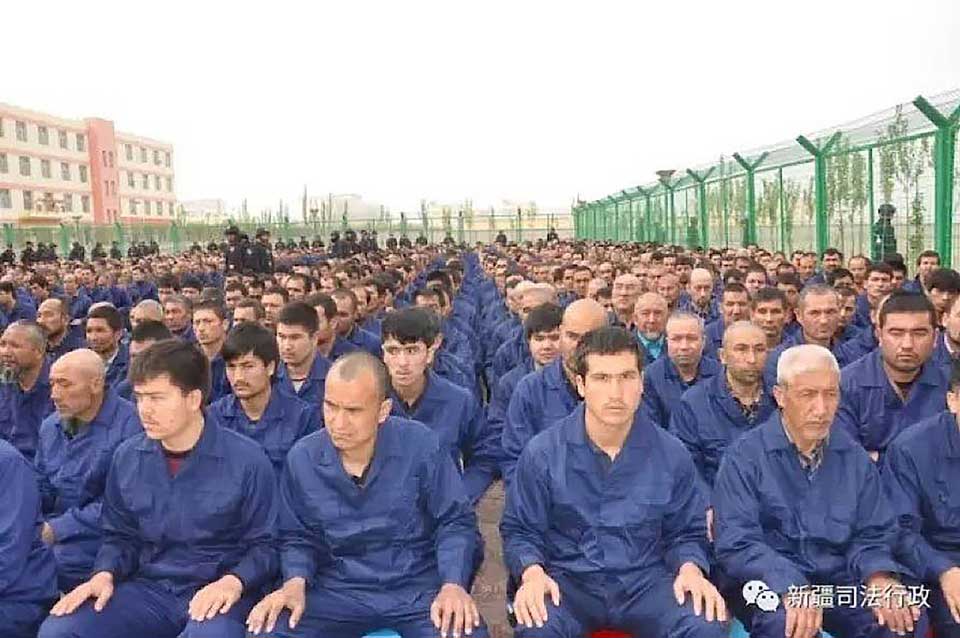
Chinese local officials were offering hair industry executives tours to Xinjiang around 2015 or 2016, promising cheap labor and favorable tax policies, a person familiar with the matter who did not want to be named told CNN. For years, the hair industry in China has been squeezed by rising wage costs and increasing competition from other parts of Asia, experts say.
In its June 2019 Trafficking in Persons Report, the US Department of State concluded that the Xinjiang authorities “offer subsidies incentivizing Chinese companies to open factories in close proximity to the internment camps, and local governments receive additional funds for each inmate forced to work in these sites at a fraction of minimum wage or without any compensation.’’
Chinese state media reported in July that there are 32 hair companies in the Lop County industrial park, employing 7,000 people described as “rural surplus labor,” adding that there are plans to expand further. In March, there were 21 companies and 4,000 workers in the park.In September, the US Department of Homeland Security also identified Lop County No. 4 Vocational Skills Education and Training Center as a possible source of forced labor and has banned any products made with labor from the camp from entering the US.
The expansion of the camp infrastructure is happening across Xinjiang, according to the Australian Strategic Policy Institute (ASPI), a think tank partly funded by the Australian and US governments. In a new ASPI report, researchers used satellite imagery to identify 380 suspected detention facilities in Xinjiang, some of which have expanded recently.
“The evidence in this database shows that despite Chinese officials’ claims about detainees graduating from the camps, significant investment in the construction of new detention facilities has continued,” ASPI researcher Nathan Ruser says.

Poverty alleviation
“This is the sample exhibition hall of Lop County Hair Product Industrial Park,” Li Feng, a Chinese news reporter says into a hand-held microphone, pointing out rows of completed wigs displayed behind her on mannequins.
Li walks through to the factory floor, adding that thousands of “surplus rural laborers” have been “absorbed” to work at the factory. The video shows long rows of uniformed ethnic minority workers, along with Han Chinese managers.
“My goal now is to make one more wig every day,” says a worker in the video called Mutailip Iminiyazi, a Uyghur name.
The whole industrial park is now subject to an import ban from the US government.“The production lines around me are making every effort to complete a batch of overseas orders,” the reporter says. “They are increasing the speed of working, and they are more motivated to get rid of poverty.”
The factory manager tells the reporter that they are implementing the “poverty alleviation” scheme under the ”important instruction” of Chinese President Xi Jinping.
The year 2020 has been marked by Xi with a pledge to help end extreme poverty. Xinjiang, one of the poorest and least urbanized regions in China, was one of the target areas for this program.
The scheme is presented by state media as a noble, benevolent effort by the ruling Communist Party to help predominantly poor rural workers gain access to the material benefits enjoyed by China’s urban residents — they are offered free training and stable jobs to enable them to support their families and achieve a better life.
But to many Uyghurs and other ethnic minorities in Xinjiang, the term “poverty alleviation” has a more sinister meaning.
That includes the two ethnic Kazakh Chinese nationals, Yerzhan Kurman and Gulzira Auelkhan, who both worked at the same glove factory in Xinjiang in late 2018.
“They forced us to work. There was no freedom.”
Yerzhan Kurman
Kurman, who was a farmer in Xinjiang before he left, says he received an ultimatum to take a factory job soon after his release from the internment camp.
“After having spent nine months in the camp, I had five days rest at home. On day six they told me that I would have to work,” Kurman says. “They said that I couldn’t refuse, as they could take me to the camp again. So on day six I went to the textile factory.”

He says he was forced to make gloves in the factory alongside thousands of others for two months.
“We couldn’t do anything without permission,” he says. “We would iron, fold and accurately put into boxes all 250 gloves. If we didn’t, they would punish us.”
They were warned they would not be paid anything if they didn’t complete 250 gloves each day, he adds.
Kurman says he repeatedly told the factory officials he wanted to get back to his wife and three children in Kazakhstan. He says he had to live on site at the factory, and was taken to see his mother once a week.
“While making those gloves, I was always thinking about my children,” he says. “Were they well, sick or dead, as we didn’t have any information from them. They didn’t let us communicate. All I needed was my family. I told them that, but they didn’t care.”
He says he was told his salary would be 600 yuan ($88) per month, but after two months’ work, he had received nothing. They eventually gave him 300 yuan ($44), and he returned to Kazakhstan.
“Nobody working in the factory was happy with the job,” says Gulzira Auelkhan. “None of them worked of their own free will.”
“I told them that I had already been in education and I didn’t want to work,” she says. “But they say that if I refuse, that means my ideology was still wrong and I would go back to the camp.”
Gulzira Auelkhan and Yerzhan Kurman both verified a state media video which showed the factory floor they had worked on, and their former boss. Credit: Yili TV
Ahmat Yusan, 62, a former Xinjiang resident and ethnic Uyghur exiled in Turkey with his wife, told CNN that his daughter, a law graduate, is currently being forced to work in a factory in Aksu, Xinjiang. She is occasionally able to make contact. They were a well-off family, he added, and his daughter had never had a job before.
Yusan’s wife said her stepdaughter “cried so hard” when talking about the forced labor, saying she “lived through hell” and that she would have considered suicide if it was permissible.
Testimonies like these shatter the illusion of a voluntary job creation program in Xinjiang, experts say.
Several major reports have concluded that the poverty alleviation scheme provides a cloak for forced labor, including analyses from ASPI, as well as the Center for International and Strategic Studies (CSIS) in the US, and academic and China expert Adrian Zenz.
The reports also highlight the mass transfer of Uyghur and ethnic minority labor from Xinjiang to factories in other parts of the province and across China — known officially as a “mutual pairing assistance program.” ASPI says at least 80,000 Uyghurs have been transferred to 27 factories across China since 2017.
ASPI’s ‘Uyghurs for Sale’ report even identified advertisements in online forums offering to arrange large numbers of Xinjiang workers. CNN has verified that several of the adverts are still online, including one with phrases like “absolutely obedient,” “can endure hardships” and “won’t cause trouble.”

The Uyghur population in China has long been subject to racist stereotypes, including the trope that they are lazy and poorly skilled, and they have faced discriminatory hiring practices.
A Chinese government white paper titled ‘Employment and Labor Rights in Xinjiang,’ published in September, details the goal of the “three-year program” on poverty alleviation which was “vigorously implemented” to “improve the quality of the workforce, and change people’s outdated mindset.”
The program was focused on the “impoverished” southern Xinjiang area because “terrorists” and those with “outdated ideas” had urged people to “resist learning” Chinese, and “refuse to improve their vocational skills.”
Between 2014 and 2019, the number of employed people in Xinjiang rose by nearly 2 million, and an average of 1.29 million workers received “training” every year — the “vast majority” of whom obtained vocational skills, the white paper says.
“In 2019, Hotan prefecture alone provided vocational training for 103,300 farmers and herders, of whom 98,300 found work,” it added.
Accusations of forced labor are based upon “fabricated facts” which deny the rights of the people to “move out of poverty and backwardness,” the paper says.
Laura Murphy, a professor of human rights and contemporary slavery at Sheffield Hallam University in the United Kingdom, who is currently based in New Orleans, says she doesn’t “have a lot of patience” for the Chinese government’s idea of poverty alleviation.
“Millions of people are being sent to concentration camps, so people have been cut off from any chance of getting jobs, advancing their careers, studying, taking care of their families,” Murphy says. “Instead, they are being sent to glove factories and hair factories.”
“They should close down these factories,” says former detainee Gulzira Auelkhan. “Those are made by using slavery. So many people were crying while making those products.”
‘As consumers, we need to know’
US companies are already shifting their supply chain away from Xinjiang.
Multiple auditors have also suspended operations in the region, including the Worldwide Responsible Accredited Production (WRAP), which said “normal social compliance audits cannot be conducted in the XUAR due to restrictions on the movement of third-party auditors.” The Better Cotton Initiative (BCI) has suspended working in Xinjiang because “the operating environment prevents credible assurance and licensing from being executed.”
Data from Import Genius shows that no hair shipments have arrived direct from Xinjiang to the US by sea since the US seizure at the end of June. But the opaque nature of the hair supply chain means that products can pass through multiple places on their way into the US market, a route which can conceal their origin.
“Manufacturers need to be more aware on where the hair products are coming from. As consumers, we need to know.”
Mikayla Lowe Davis
Focusing only on Xinjiang also does not take into account the reality that goods, and labor, are being transferred back and forth within China.
“Three years ago, a lot of hair factories started outsourcing part of their production to Xinjiang,” said a person familiar with the matter. The source said some hair products are being sent to Xinjiang for the labor-intensive parts of the process, before being sent back to other parts of China where they are packaged, labeled and shipped out.
The system of Chinese hair factories outsourcing the heavy-duty production to save on labor costs is already established, industry insiders say. One of the main beneficiaries of this has been North Korea.
Hair products are exempt from UN sanctions on North Korea introduced in 2017, and the country has ramped up production since then, with $22.4 million of hair exports to China in 2018, data from Trading Economics shows. Chinese export data from 2017-2019, obtained by CNN, also shows regular shipments of incomplete hair products going to North Korea, most of it driven across the border.
But since the North Korea-China border closed in January to prevent the spread of Covid-19, the trade flow has dried up, and prices have soared.
Some of “the largest hair importers in the States” are now complaining of an “emergency” in supply of popular products such as lace closures and lace front wigs, says a US hair industry insider, who does not want to be named. “There’s a massive shortage.”
The importers say some companies are moving production from North Korea to Xinjiang, but “that will take six months to get going,” the source says.
A Chinese state media reporter introduces the Lop County Hair Product Industrial Park, where lace closures and lace front wigs are being made by what she calls “surplus rural laborers.” Credit: Xinjiang Satellite TV
Lace closures and lace front wigs take an experienced worker a day or two to make, as they need to hand-knot individual strands of human hair into a piece of lace. The state media video from the Lop Country Hair Product Industrial Park shows what the reporter calls “surplus rural laborers” making these products, experts say.
The other issue — the transfer of Uyghur labor internally in China — has already been flagged by the apparel industry, which has come under much more scrutiny from policymakers and campaigners in the US — partly because of the big international brands involved, and because Xinjiang produces 20% of the world’s cotton.
Steve Lamer, president and CEO of the American Apparel & Footwear Association, told a US congressional hearing in September that their members “ensure” that their manufacturers across China “do not employ Uyghurs or other ethnicities who have been recruited via labor agents or vocational schools connected to the Chinese government,” in order to adhere to the industry’s “zero tolerance prohibition against forced labor.”
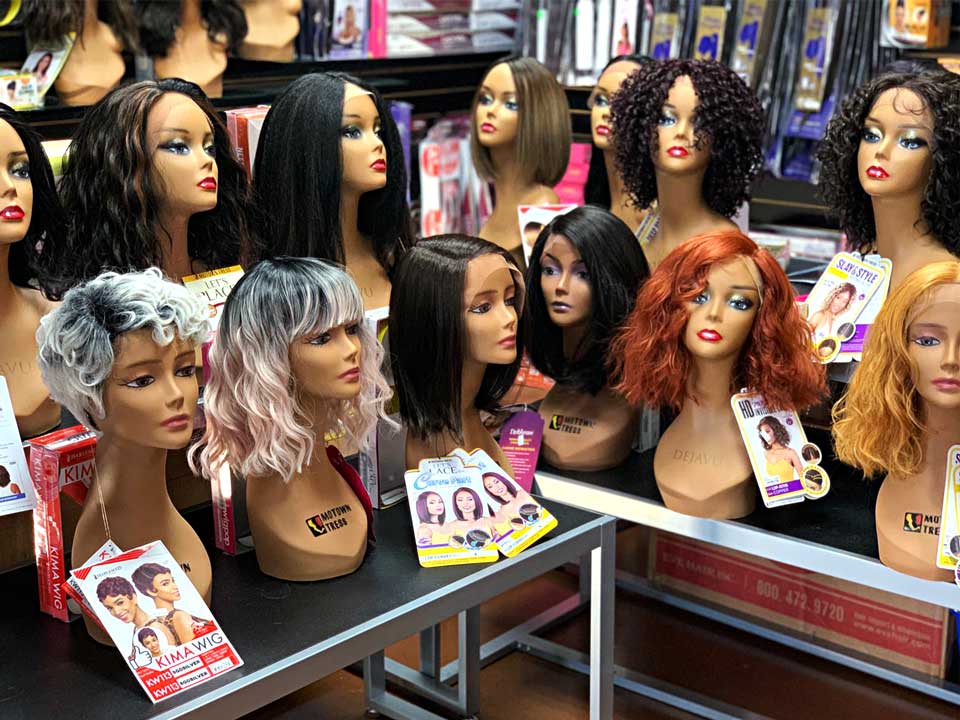
But currently, the hair industry is not subject to the same sort of international examination.
“There are no regulations in the US, there’s no regulatory authority,” Krishan Jhalani from Indique Hair says.
Professor Laura Murphy says the priority is for US hair companies to investigate their supply chain and take action like I&I Hair did. “But we need bigger companies to step up and do the same thing,” she added.
“It really just came down to us, not knowing, and that’s the most frustrating part,” William Choe from I&I Hair says. “We probably should get together and stand up and stand against these atrocities.”
Since 2017, the exports of hair products from Xinjiang to the US grew rapidly

Solidarity on this issue is also needed from hair importers in other major markets, US Customs and Border Protection said. Chinese export data shows tens of thousands of shipments of hair products mainly going to Europe, Africa and Brazil.
There should also be a “groundswell on social media through social media influencers and through celebrities and pop culture folks who wear hair extensions or use them to raise awareness of this issue,” says Tiffany Gill from Rutgers University.
Gill says it could create an opportunity to shift some production back to the US — particularly into the hands of African American owners who have struggled to get a foothold in the industry due to the dominance of Korean-American companies. Price point would be an issue, though, she adds.

Already, the industry is changing. Black entrepreneurs –- mostly women — have been opening three or four stores a week on average over the past six months, Sam Ennon, the president of the Black Owned Beauty Supply Association (BOBSA) told CNN. The pandemic actually helped the business, he says, because rental prices in the retail sector have lowered.
The supply chain issue in China is something the “Black hair industry would like to be on the forefront of,” Ennon says.
“I think that if more information did come out about the conditions under which people are laboring to bring this hair to African Americans, that there might be an increased sensitivity just based on the legacy of slavery and forced labor in African American communities,” Gill says.
“It needs to have more light shed upon it,” stylist Lowe Davis says. “A lot of people just don’t know where to start.”
Original article may be read here